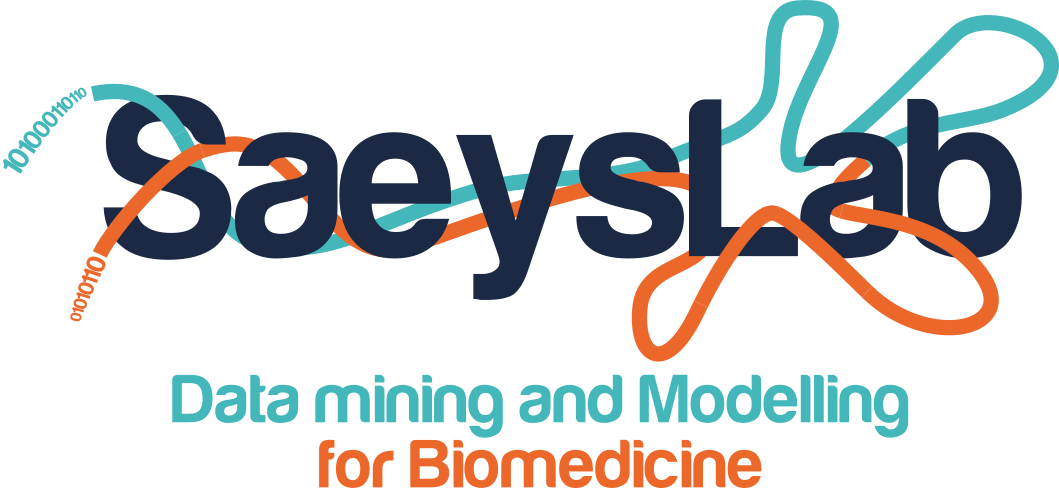Software

Spotless
A Nextflow pipeline to run and benchmark 11 spatial deconvolution methods. Docker containers are provided for each method, so no installation is required. You can benchmark your own method against others, or simply use the pipeline to deconvolve your own dataset.

PeacoQC
A quality control tool that can clean the data of erroneous measurements that occur during sample acquisition. PeacoQC will try to find density peaks for every marker in your data and will remove anomalous regions through an isolation tree and MAD analysis. At the end of the analysis, PeacoQC will return a cleaned FCS file and a figure that highlights the problem regions that were removed by the algorithm. Currently it is available on Github, Bioconductor and has a plugin on FlowJo.
Reference: Emmaneel et al., PeacoQC: Peak-based selection of high quality cytometry data. Cytometry Part A, 2023. DOI: 10.1002/cyto.a.24501

NicheNet
Predict ligand-target links between interacting cells using bulk or single-cell transcriptomics data. Our prior model integrates existing knowledge on signaling and gene regulatory networks, creating an extensive network of ligand-receptor-transcription factor-target signaling paths. This prior model is used to prioritize ligand-receptor interactions that might drive gene expression changes in cells of interest.
Browaeys, R., Saelens, W. & Saeys, Y. NicheNet: modeling intercellular communication by linking ligands to target genes. Nat Methods 17, 159–162 (2020). https://doi.org/10.1038/s41592-019-0667-5

CytoNorm
A normalization tool for the removal of batch effects in cytometry data. CytoNorm makes use of control samples taken along in every batch to learn the technical differences between the batches. Cell-type specific batch effects can be captured thanks to a FlowSOM clustering step, and non-linear changes are modeled by characterizing the distributions with multiple quantiles and aligning them with splines. Available on Github, Bioconductor and FlowJo.
Reference: Van Gassen et al., CytoNorm: A Normalization Algorithm for Cytometry Data. Cytometry Part A, 2019. DOI: 10.1002/cyto.a.23904

Dynverse
dynverse is an open set of packages to benchmark, construct and interpret single-cell trajectories. A complete overview of the packages can be found on dynverse.org. Some of the highlights:
- dyno offers a complete TI pipeline to run & interpret TI outcomes.
- dynbenchmark contains all source code used to replicate the benchmarking study by Saelens and Cannoodt (doi:10.1038/s41587-019-0071-9).
- dyngen is a flexible, multi-modal simulation engine used to study dynamic cellular processes at single-cell resolution (doi:10.1038/s41467-021-24152-2).
Saelens, W., Cannoodt, R., Todorov, H. et al. A comparison of single-cell trajectory inference methods. Nat Biotechnol 37, 547–554 (2019). https://doi.org/10.1038/s41587-019-0071-9

FlowSOM
A fast and accurate, widely used clustering algorithm for cytometry data. FlowSOM makes use of a two-step clustering procedure, first using a Self-Organizing Map, followed by consensus hierarchical meta-clustering. The algorithm is available in R (on Github and Bioconductor), but also implemented in several commercial cytometry analysis tools (such as FlowJo, Cytobank and OMIQ).
References:
- Van Gassen et al., FlowSOM: Using self-organizing maps for visualization and interpretation of cytometry data. Cytometry Part A, 2015. DOI: 10.1002/cyto.a.22625
- Quintelier et al., Analyzing high-dimensional cytometry data using FlowSOM. Nature Protocols, 2021. DOI: 10.1038/s41596-021-00550-0
